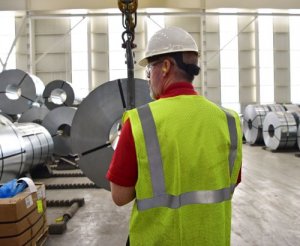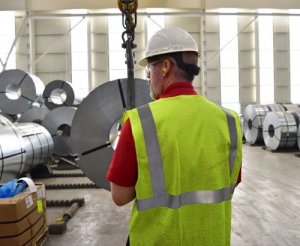Are Companies Including Ergonomics in Restarting Work Plans?
06/01/2020

As industries begin to transition back to the workplace from a pandemic shut down, we must consider a range of new measures to ensure safety and health. COVID-19 is unforgiving and warrants detailed preventative measures when it comes  to protecting the workforce and general public. With emerging plans, companies must consider everything from facility-wide PPE to social distancing on the assembly line, and many of these measures directly affect how we physically work.
to protecting the workforce and general public. With emerging plans, companies must consider everything from facility-wide PPE to social distancing on the assembly line, and many of these measures directly affect how we physically work.
Another important consideration is the impact these changes will have on the effectiveness of pre-existing ergonomics programs, and the potential for increased musculoskeletal disorder (MSD) risk when protocols for working are altered. If not considered in the plan for restarting work, new injuries could arise in an unprecedented way and cost, on top of the current hit from COVID-19, as much or more in medical bills and lost time.
We recently conducted a study of the top 150 companies in the Fortune 1000 to see what role, if any, ergonomics is playing in restarting work plans. Of the 150, we found 60 companies have published COVID-19 related restarting work policies, with only 4 (6%) referencing ergonomics or musculoskeletal disorders.
When considering restarting work, we advise all companies to look at the impact these changes will have on risk for musculoskeletal disorders. This can be accomplished through projected risk analysis of jobs. For those who have already restarted work, use follow-up analysis to compare the actual risk instead of estimating. Pay attention to things like higher frequencies with fewer workers on the line. Positioning workers at least 6 feet apart when handling materials may require more equipment like conveyors and carts. Also, consider the increased forces and durations which will be seen when replacing 2-person lifting tasks with new lifting methods.
Another situation to re-evaluate is job rotation. Job rotation inherently increases the risk of spreading COVID-19, and will need to be replaced with new, job-specific ergonomic fixes. In addition, the impact of latex gloves on grip forces and blood circulation will be significant, and humid environments will contribute moisture to glove surface, causing slip to otherwise normal work activities.
Using the right tools to guide decision making when planning to restart work will allow us to prepare not only for firsthand COVID-19 defense, but also for the long-term role ergonomics will play as we continue to rewrite history.
Related topics:






